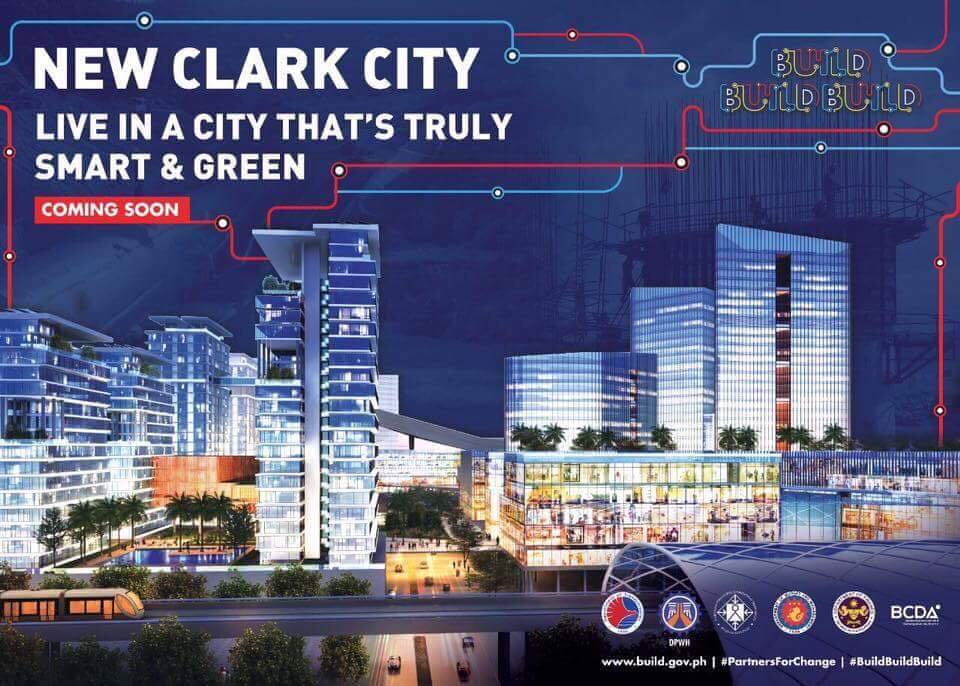
Imagine a city of the future, with rising skyscrapers, smart everything and the latest and best technology available. This is the Philippines’ plan for a new smart city they are building called New Clark City. The goal is to help reduce congestion in crowded Manila and push more people to the new, better-engineered city. A train will still connect the two sister cities, allowing families in each location to visit each other easily.
New Clark City will hold about two million people and bring new technology companies and about $30 billion to the Philippine economy. Demand for urban living is growing, with younger generations preferring life in the big city to more rural living. 70 percent of the world will live and work in cities by the year 2050.
There are more plans for cities of the future too. Many people want to live in the city and have all the modern conveniences imaginable. As that demand increases, expect to see more and more large cities going smart or alternative futuristic cities springing up. Here is what you can expect from a city of the future:
1. Smarter Ground Transportation
One of the bottlenecks of any major metropolis is figuring out how to get citizens from point A to point B. One of the major issues Manila is dealing with is traffic jams. If you’ve ever driven through Atlanta, Georgia or tried to get through New York City during rush hour, you know that traffic jams are a major issue for big cities.
Moving products is difficult. People arriving at work on time becomes a challenge. Traffic jams create many different problems for citizens and businesses in a city — even impacting emergency services.
Instead, imagine a city that is so smart that it can see where the most traffic is and reroute cars to another area. However, vehicle traffic wouldn’t be the only transportation option in a smart city.
Part of the solution for transportation issues would include a smart subway or train system and focus on driverless, shared cars that reduce the need for parking and create less pollution. Sensors inform citizens of the least congested path to their destinations.
2. Flying Cars
By the year 2020, Uber plans to test out flying cars in major cities such as Dallas and Dubai. This could be a game changer in the way people get around a city. Opening up the skies reduces traffic congestion in a number of ways. By using different levels of altitude, more cars could zip to and from different locations within the city without the congestion of ground traffic.
These flying cars would also reduce pollution and the need for vehicles that burn fossil fuels. This would make the entire city greener.
3. Cheap Green Energy Options
One of the things most smart city designers focus on is reducing the carbon footprint. From adding solar panels to harnessing the power of the wind, to choosing cheaper options for energy. For example, propane is a cheaper and often more versatile energy source, especially for things that need a consistent source of energy. It is a cleaner fuel source that meets green energy goals, producing low carbon monoxide and hydrocarbon emissions.
4. Safety
A smart city has public safety monitoring capabilities, which can reduce crime rates. Imagine a city with surveillance in higher crime areas or the ability to dispatch law enforcement to a scene in seconds. If city planners put a focus on safety, then there are many elements that can improve the overall crime rates and safety of citizens.
Although 27 percent of public service organizations already utilize data analytics for crime prevention, smart cities take this one step further. Imagine a world where someone fires a gun and law enforcement is immediately notified, the sidewalk senses the victim lying on the ground and dispatches an ambulance and the street lights grow brighter to allow EMS to find the victim quickly. It would save more lives.
5. Protection from Natural Disasters
Natural disasters can negatively impact any city on the planet. Each area of the world has different types of threats, from tornadoes to flooding to earthquakes. However, a smart city would take these threats into account and find a way to reduce the risk for citizens through smart technology.
For example, Manila is vulnerable to flooding and damage from typhoons, but New Clark City would provide safety for its citizens from these threats. A city located where earthquakes occur would feature buildings built to sustain the shaking. No matter the threat, smart cities would figure out how to withstand those issues and easily move forward.
6. Smarter Buildings
By 2040, buildings will have artificial intelligence (AI) features that will allow you to simply talk to the building and ask for adjustments in lighting, temperature or give elevator commands. These living buildings will even be able to automatically adjust to changes in weather or figure out your preferences for temperatures.
While some of these abilities are already available, such as smart elevators, expect to see advances beyond your imagination and the ability to not even worry about small daily tasks, such as changing the thermostat or turning lights on and off.
What Else to Expect
Technology advances faster than what we can imagine. One thing you can expect in the next fifty years is the unexpected. While we can make some educated guesses about smart buildings and transportation based on current abilities, there are likely many other things that will make smart cities even more futuristic than we’d ever imagined today.
Nathan Sykes is a tech blogger interested in the ways technology can change enterprise. To read more by Nathan, check out his blog, Finding an Outlet.
Leave a Reply